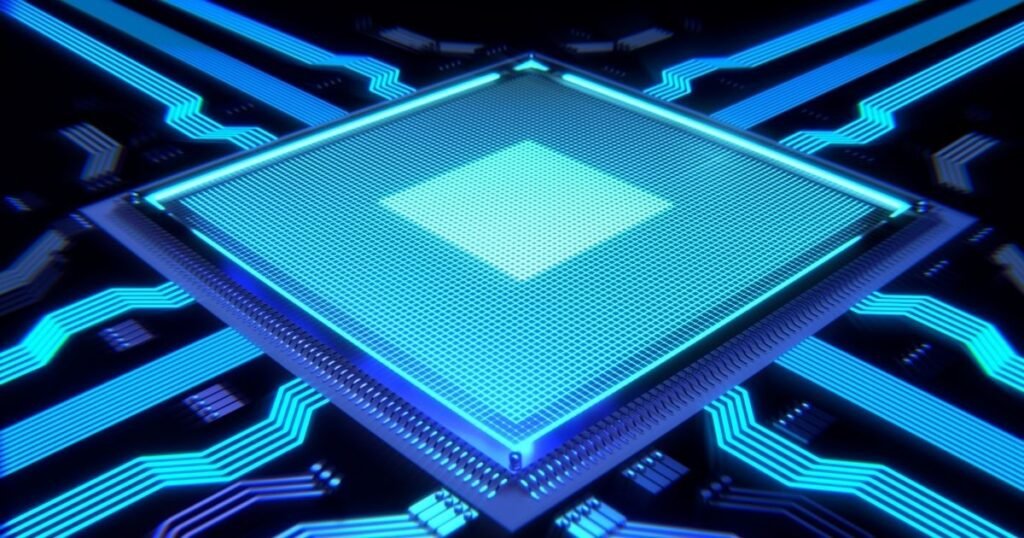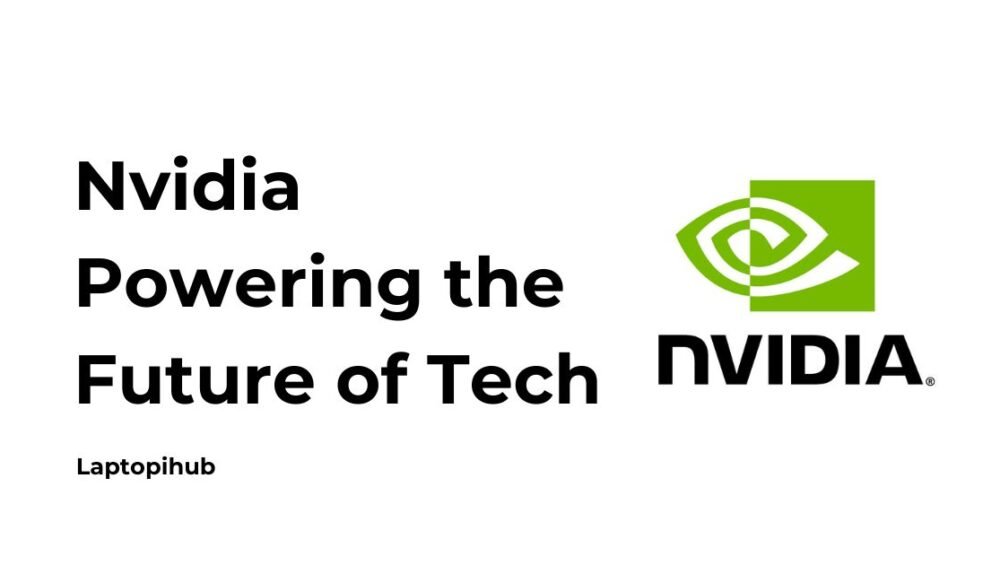Explore Nvidia’s journey from gaming GPUs to AI, self-driving cars, and the metaverse—discover how it’s shaping the future of tech.
Introduction to Nvidia
When you think about the modern tech world, one name often stands out—Nvidia. From powering the graphics in your favorite video games to leading the way in artificial intelligence, Nvidia is shaping the future in more ways than you might realize. It’s not just a chip maker; it’s a company that has become synonymous with innovation, performance, and cutting-edge computing.
The Humble Beginnings of Nvidia
Back in 1993, three visionaries—Jensen Huang, Chris Malachowsky, and Curtis Priem—founded Nvidia. Their dream was simple yet bold: to transform the computing experience with powerful graphics processing. At the time, the idea of specialized graphics processors was still new. But they saw the future long before others, and their persistence laid the foundation for a revolution in computing. Fast-forward to today, and Nvidia has grown into one of the most influential tech giants in the world.
Nvidia’s Rise in the GPU Market
Nvidia carved its space by creating graphics processing units (GPUs) that revolutionized how computers handled visuals. Before GPUs became mainstream, computers struggled with rendering complex graphics. Nvidia changed that game forever. Over time, GPUs became the heart of gaming, design, AI, and even scientific research. With each generation of GPUs, Nvidia raised the performance bar, offering better speed, efficiency, and realism.
Gaming and the GeForce Revolution
Remember the first time you played a game with mind-blowing graphics? Chances are, Nvidia’s GeForce series was behind it. The GeForce brand became a household name in gaming circles, offering a new level of immersion and visual fidelity. Today, technologies like ray tracing and DLSS (Deep Learning Super Sampling) have taken gaming visuals to movie-like realism. For gamers, Nvidia isn’t just a brand—it’s part of the culture.

Nvidia and Artificial Intelligence
Beyond gaming, Nvidia has made huge strides in artificial intelligence (AI). Their GPUs are designed not only for rendering images but also for training machine learning models. Imagine teaching a computer to recognize diseases in medical scans or enabling voice assistants to understand human speech—many of these breakthroughs are powered by Nvidia’s hardware. This shift into AI has elevated Nvidia from a gaming-focused company into a leader of the AI revolution.
The Role of CUDA in Innovation
Nvidia introduced CUDA, a parallel computing platform, that opened up a whole new universe of possibilities. Instead of GPUs being used just for gaming, CUDA allowed developers to harness that power for scientific simulations, deep learning, and data analytics. In short, CUDA turned Nvidia GPUs into multi-purpose engines for innovation, making them indispensable in industries like pharmaceuticals, aerospace, and finance.
Nvidia in Data Centers and Cloud Computing
Ever wonder how tech giants handle massive amounts of data? Nvidia GPUs are at the core of many data centers around the world. Their accelerators boost performance in cloud platforms like Amazon Web Services, Google Cloud, and Microsoft Azure. From running AI research to powering streaming services, Nvidia’s hardware keeps the modern digital world running behind the scenes. Without Nvidia, many of today’s cloud-based apps wouldn’t be as fast or efficient.

Nvidia and Autonomous Vehicles
The cars of the future are smarter, safer, and more connected—and Nvidia is steering that transformation. Their DRIVE platform enables self-driving cars to process real-time data from sensors, cameras, and radars. Think of it as the “brain” of autonomous vehicles, capable of making split-second decisions to keep passengers safe. As the automotive industry pushes toward electrification and autonomy, Nvidia is in the driver’s seat.
Mergers, Acquisitions, and Strategic Moves
Nvidia has been bold in expanding its reach. From acquiring Mellanox to strengthen its data center presence, to its attempted purchase of Arm, Nvidia’s strategic moves show its intent to dominate multiple industries. While not every deal went through, the company’s vision of becoming more than just a GPU maker has already been realized. These expansions prove Nvidia’s hunger to remain at the cutting edge of tech.
Nvidia vs Competitors in the Tech Space
Of course, Nvidia isn’t alone. AMD and Intel are key rivals in GPUs and AI chips. AMD, for instance, has made a strong comeback with its Radeon GPUs, while Intel is entering the GPU race as well. But Nvidia has managed to stay ahead by creating a powerful ecosystem, combining hardware, software, and platforms. The result? A loyal customer base and a reputation for delivering innovation faster than its competitors.
Nvidia’s Role in the Metaverse
The buzz around the metaverse is huge, and Nvidia is right at the center. Their Omniverse platform is designed to create realistic 3D simulations, virtual spaces, and collaborative environments. Imagine architects designing buildings together in a shared virtual space or game developers crafting entire worlds collaboratively. That’s what Omniverse makes possible, and it positions Nvidia as a key builder of the next digital frontier.

Green Computing and Sustainability Efforts
Tech innovation comes with environmental responsibility. Nvidia is investing in energy-efficient chips, carbon reduction, and green data centers. They’ve committed to using renewable energy in their operations and reducing their carbon footprint. By focusing on sustainability, Nvidia shows it’s not just about pushing boundaries—it’s about doing so responsibly for future generations.
The Future of Nvidia’s Technology
Looking ahead, Nvidia aims to integrate AI deeper into industries like healthcare, robotics, and space exploration. Imagine robots performing complex surgeries with precision or satellites processing data in real-time—all powered by Nvidia’s chips. With quantum computing on the horizon, Nvidia’s technology could play a vital role in breakthroughs we can barely imagine today.
Challenges Nvidia Faces Ahead
Even giants face hurdles. Global chip shortages, rising competition, regulatory scrutiny, and geopolitical tensions are challenges Nvidia must navigate. The semiconductor industry is also highly unpredictable, with demand spikes and supply issues creating constant pressure. Yet, Nvidia has proven time and again that it thrives under pressure, turning obstacles into opportunities.
Conclusion
Nvidia isn’t just a company—it’s a force shaping the digital age. From gaming to AI, data centers to autonomous cars, Nvidia continues to push the boundaries of what’s possible. The future they’re building is one where technology doesn’t just serve us—it transforms us. Whether you’re a gamer, a developer, or simply someone who benefits from smarter tech, chances are Nvidia is already impacting your life more than you realize.
FAQs
What is Nvidia best known for?
Nvidia is best known for its powerful GPUs, especially the GeForce series used in gaming and AI applications.
How does Nvidia impact artificial intelligence?
Nvidia GPUs power AI training and deep learning, driving advancements in healthcare, robotics, and everyday smart technology.
Is Nvidia only about gaming?
No, Nvidia has expanded into AI, cloud computing, autonomous vehicles, and the metaverse, making it a key player in multiple industries.
Why is CUDA important for Nvidia?
CUDA enables developers to use GPU power for tasks beyond graphics, like simulations, data analysis, and AI research.
What’s next for Nvidia?
Nvidia is focusing on AI integration, quantum computing possibilities, and building sustainable, future-ready technology.






